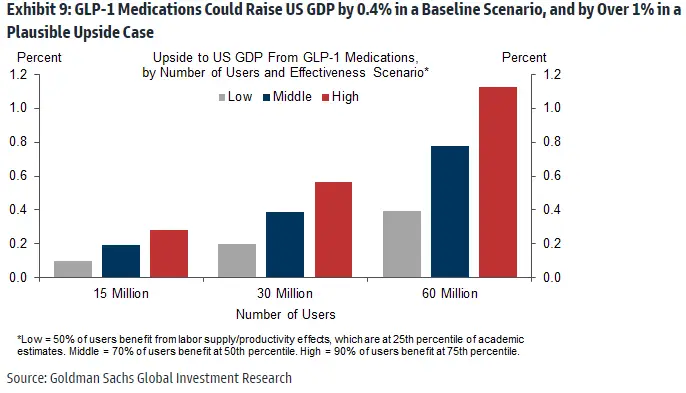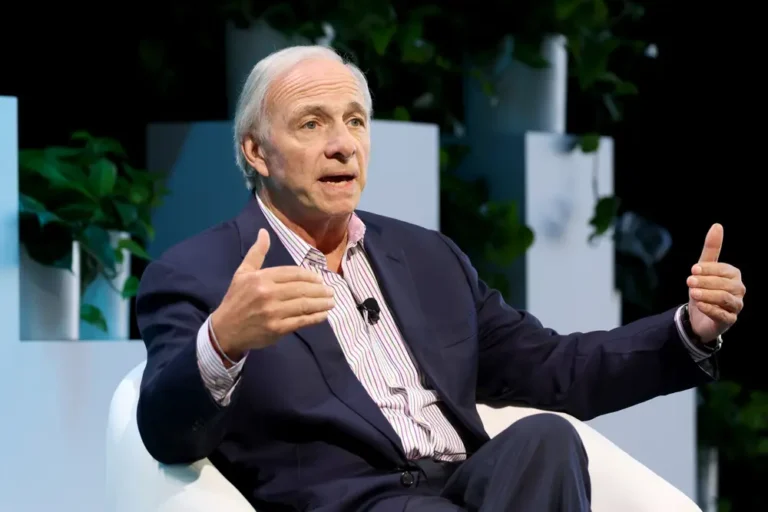The more Americans who take Ozempic, the faster the US economy could grow, Goldman Sachs says

Ozempic.
The more people who take GLP-1 weight-loss drugs, the faster the US economy could grow, a Goldman Sachs analyst said in a note last month.
The US GDP could grow by an extra 1% if 60 million Americans took GLP-1 drugs by 2028, Jan Hatzius, the chief economist at Goldman Sachs, wrote.
Hatzius said health-related problems keep people from participating in the labor force and inhibit economic growth. Obesity increases the risk of serious health problems, including heart attacks, strokes, and diabetes.
“Combining current losses in hours worked and labor force participation from sickness and disability, early deaths, and informal caregiving, we estimate that GDP would potentially be over 10% higher if poor health outcomes did not limit labor supply in the US,” Hatzius said.
So drugs that have shown promise in improving a range of patient health outcomes could have a sizable impact on the broader economy.
“The main reason we see meaningful upside from healthcare innovation is that poor health imposes significant economic costs. There are several channels through which poor health weighs on economic activity that could diminish if health outcomes improve,” Hatzius said.
GLP-1 drugs from Novo Nordisk and Eli Lilly and Company are sold under the brand names Ozempic and Mounjaro to treat type 2 diabetes, and under the names Wegovy and Zepbound to treat obesity.
Sales of the drugs have exploded, with some users seeing drastic weight loss of up to 20%. A study released in August found that patients who took Wegovy for weight loss reduced their risk of heart attacks, strokes, and cardiovascular death by 20%.
And with the US obesity rate hovering at around 40%, tens of millions of Americans could be prescribed GLP-1 drugs over the next few years, but just how many will depend on the outcome of clinical trials on these drugs and whether health insurers will cover them.
“If GLP-1 usage ultimately increases by this amount and results in lower obesity rates, we see scope for significant spillovers to the broader economy,” Hatzius said.
One spillover effect could be an increase in productivity, Hatzius said, citing academic studies that found obese individuals are less likely to work and to be less productive at work
“These estimates therefore suggest that obesity-related health complications subtract over 3% from per-capita output, implying an over 1% hit to total output when combined with the over 40% incidence of obesity in the US population,” Hatzius said.
And if there are more productivity gains via improved health outcomes, the impact on GDP growth in excess of its current trend could be between 0.6% and 3.2%.
“Historically, health advancements have lowered the number of life years lost to disease and disability by 10% per decade in DM economies, and we estimate that a 10-year step forward in health progress in excess of current trends could raise the level of US GDP by 1%,” Hatzius said.






